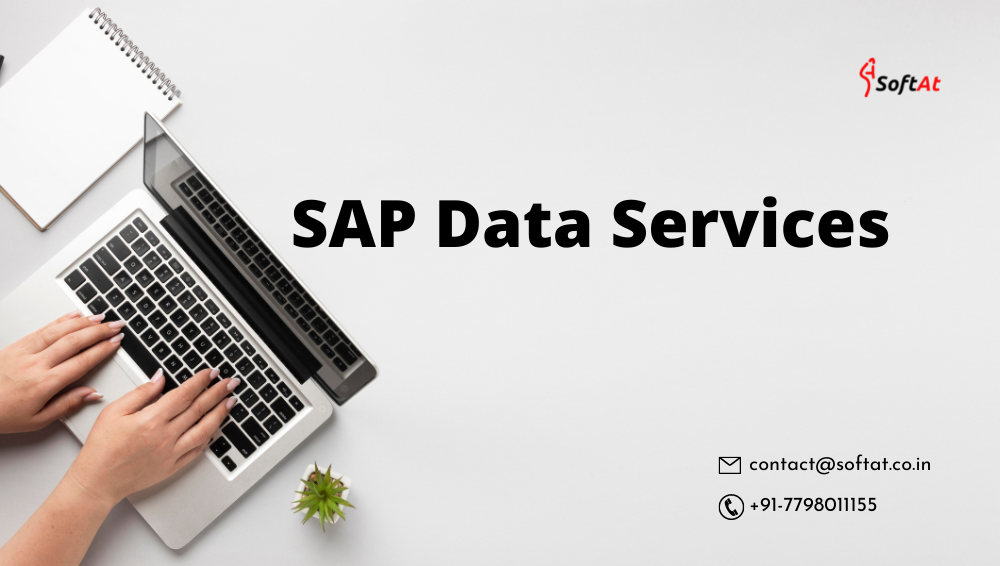What is SAP Data Services?
SAP Data Services is an ETL tool that provides a single enterprise-wide solution for data integration, transformation, data quality, data profiling, and text data processing from disparate sources into a target database or data warehouse.
SAP Data Services (SAP DS, originally SAP BusinessObjects Data Services) is a system for translating vast amounts of data into knowledge that can be used in business. On the one side, the application focuses on data integration, and on the other, data quality. As a result, businesses have access to a reliable, resilient, and constantly updated database on which to make their business decisions.
SAP Data Services is primarily targeted at businesses with high data quality, data integration, and data transformation needs. SAP DS is tightly connected with the Walldorf-based manufacturer’s business applications and other data tools, thus existing SAP clients are particularly targeted.
When data from SAP and non-SAP systems need to be seen together, SAP Data Services is very useful. Relational databases, NoSQL databases, DBMS (database management systems), third-party enterprise systems, Web services, and even big-data resources are examples of non-SAP systems (e.g., Hadoop-based). It makes no difference whether the source system is on-premises or in the cloud.
Functions of SAP Data Services
- Data Quality Management
- Change Data Capture (CDC)
- Data integration and data transformation
- Integration with other SAP products
- Data profiling
- Analysis of text data
1. Data Quality Management
Data quality is a key area of application for SAP Data Services. The solution is suited for making quality transparent and monitoring it across systems as a common platform. This also makes previously hidden quality issues and correlations evident.
In addition, the software shows how quality flaws affect downstream applications and systems. All of these elements are represented on dashboards that are well-organized.
SAP Data Services also includes established, customizable procedures for data analysis, cleansing, standardization, and enrichment. SAP DS is well suited for both one-time data cleansing projects and ongoing quality assurance because of these features.
2. Change Data Capture (CDC)
CDC is used to detect data changes in a source database instantaneously and update the target system accordingly.
As a result, the full data stock does not need to be updated on a regular basis. Only new or modified data records are sent instead. Thus, significant computational resources are saved.
3. Data integration and data transformation
SAP DS is a tried-and-true data integration and transformation solution. Its primary goal is to link, synchronize, and process structured and unstructured data from many sources.
As a result, SAP Data Services not only offers batch processing, but also the traditional method of data transformation. Real-time services are also available. They let users query data services using established procedures and receive immediate replies.
4. Integration with other SAP products
Data Services is compatible with wide a range of other SAP Enterprise Information Management (EIM) products. For instance, consider the following:
- SAP Information Steward is a data profiling, data quality, and metadata management application by SAP.
- SAP Master Data Management is a tool that helps you keep track of your SAP Master Data.
- SAP Master Data Governance is a system for master data consolidation and central control.
- SAP Information Lifecycle Management is a piece of software that allows you to manage data flows and metdata.
- SAP Extended Enterprise Content Management from OpenText (Extended ECM) connects with unstructured content and business application.
5. Data profiling
Data profiling is a Data Quality Management job that can also be attributed to data profiling. It’s a type of computerized analysis that can be used to spot quality issues.
Data profiling gives details on frequency distributions, invalid values, minimum & maximum values, and patterns in existing data sets, among other things. This allows for the detection of trends and irregularities in a database. This strategy is extremely useful for detecting skewed data early on.
6. Analysis of text data
Data Services, as previously stated, also enable the processing of unstructured data. This attribute is particularly important when working with text data (text data processing).
The approach extracts essential phrases, facts, moods, thoughts, and trends from over 200 different file and text formats, allowing useful insights to be gained. Press releases, social media, e-mails, and blogs are just a few examples.
SAP DS Architecture
Data Services architecture consists of the following components:
- Central Repository – It is used for settings of repositories to job servers, security management, version control, and object sharing.
- Designer – Creates a project, a job, a workflow, a data flow, and runs it.
- Local Repository (here you could create change and start jobs, workflow, dataflow).
- Job server & engine – It is in charge of managing the jobs.
- Access server – It is used to run the real-time jobs that developers have built in the repositories.
Data Services PAM
The Product Availability Matrix (PAM) provides details about SAP product releases, including release types, maintenance periods, anticipated availability, and upgrade paths. The PAM also provides information about platform availability, such as database and operating system platforms.





